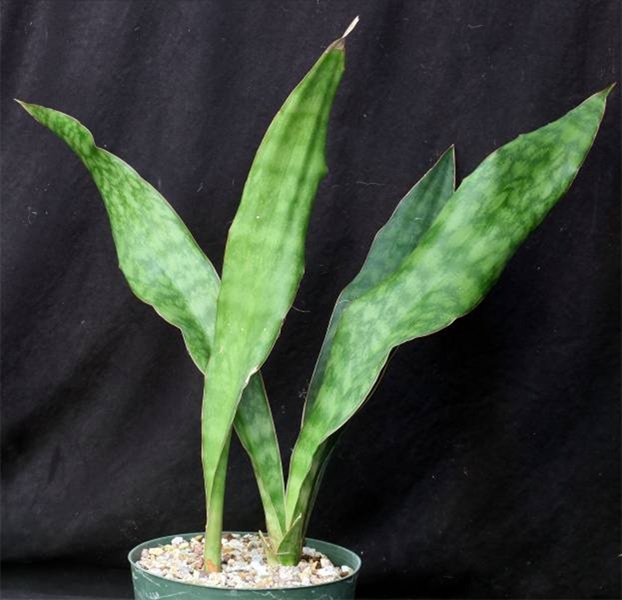| Protologue: |
Sansevieria 37: 6-11 (2018). |
| Subgenus: |
Sansevieria |
| Group: |
Sansevieria elliptica |
| Etymology: |
This species is named for Ernst Specks, a German horticulturalist who recognized the importance of several species of Sansevieria and brought them into cultivation, including this species (Specks 21430). |
| Distribution: |
This species is only known from its type locality southwest of Natitingou, Benin, and it has not been documented elsewhere. |
| Brief Description: |
This is a relatively fast-growing acaulescent species that forms dense clumps from rhizomes. The immature leaves are similar in shape to mature leaves, which are oblanceolate, 2 - 5 in number, ascending to spreading, broad and moderately stiff with light gray-green patterning over a medium-green background. The leaves are 70-110 cm long and 6-7 cm wide, with a pronounced U-shaped central channel bearing longitudinal lines that are more prominent towards the base. The upper side of the leaf is smooth, the lower side is moderately rough, and the tip is blunt. The simple inflorescence is 90 cm tall and simple with clusters bearing 4 - 8 flowers with shredding tepals. |
| Similar Species: |
This species is unique in West Africa because of the roughened lower leaf surface. In addition, the tepals shred after flowering, giving a shaggy appearance to the inflorescence. Sansevieria specksii is unlikely to be confused with anything else in the field, but in cultivation it bears strong resemblance to other members of the Sansevieria elliptica group, none of which has the same flowering characteristics as this species. It is the only member of that group known from West Africa. |
| |
| |

Sansevieria specksii (Specks 21430) flowering in cultivation.
|
| |

The inflorescence of Sansevieria specksii, showing the shaggy appearance owing to the shredding flower tepals.
|
| |

Sansevieria specksii (Specks 21430) in cultivation.
|

